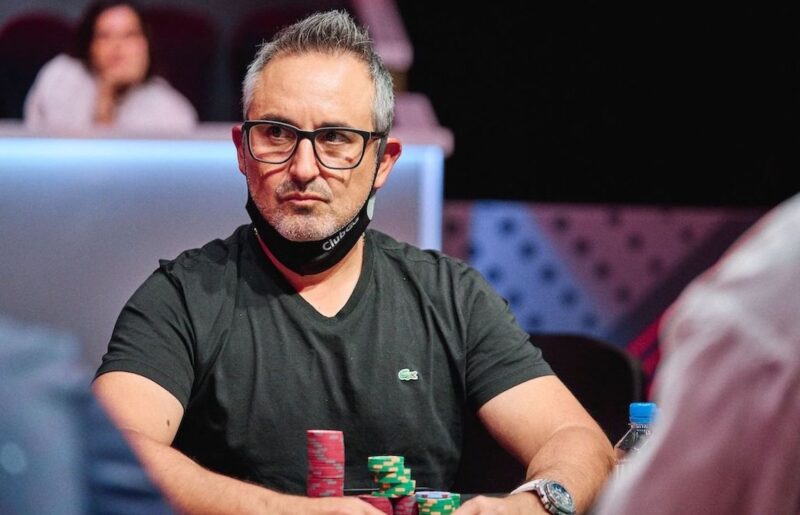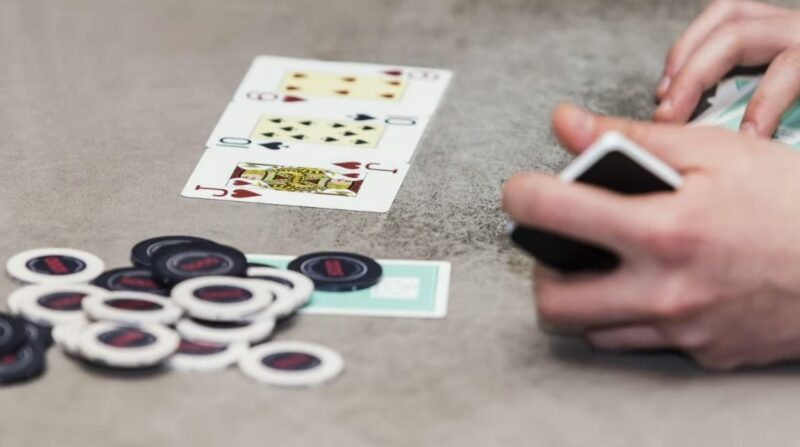Poker is a game of skill, strategy, and luck. While it’s easy to get caught up in your own hand, every player at the table is doing the same thing. But, there’s one key to winning – reading the people across from you. Knowing how to spot a poker tell could make all the difference in a game.
As much as you focus on the cards in front of you, so do others. Every action, every look, every tiny shift in behavior can reveal information about your hand. If you’re trying to keep your cards close to the chest, you better know how to avoid giving away any clues.
There are a few common signs, often subtle, that can give away your strategy. It’s not always the obvious stuff. And no, it’s not always the sweat dripping down someone’s face in a high-stakes moment. Poker tells can be much sneakier than that.
Key Points
- Poker tells are all about reading others.
- Subtle movements and body language give away a lot.
- Eyes, hands, and facial expressions are key signals.
- Different tells can suggest strength or weakness.
- A good player knows how to hide their own tells.

1. What Are Poker Tells?
Poker tells are physical or verbal signs that reveal something about your hand or mindset. They’re not always obvious. In fact, some players may not even be aware they’re doing it. That’s where you come in. If you spot a tell, it can give you valuable insight into what the other person might be holding. It’s like figuring out a puzzle – sometimes the pieces are right in front of you.
When people play poker, they’re not just focused on their cards. They’re thinking about how others will perceive their actions. Do they need to act confident? Relaxed? Nervous? Everyone reacts differently, and these reactions can be a gold mine of information if you’re paying attention.
2. Common Tells Players Exhibit
Now let’s dig into the signs to look out for. Poker tells aren’t always huge. In fact, many of them are tiny details, like a slight change in posture or an unconscious gesture. Here are some of the most common:
Body Language
- Leaning forward ─ When a player leans forward on the table, it usually means they’re interested in the hand. It could indicate a strong hand or excitement.
- Crossed arms ─ This could be a sign of a defensive player. They’re trying to protect themselves. Watch for this when a player seems uncomfortable or unsure about the table dynamics.
Facial Expressions
- Furrowed brow ─ If a player furrows their brow, they could be trying to hide anxiety. If they’re in a bad hand, they might be more likely to show frustration.
- Smiling too much ─ A forced smile could indicate bluffing. It’s hard to maintain a natural smile when you’re pretending to have a good hand.
Eye Movements
- Rapid eye movement ─ Shifting eyes, darting around, or constantly glancing at other players’ reactions can suggest discomfort or stress. It might point to a weak hand, especially if they’re trying to avoid eye contact.
- Glaring ─ Players who glare at you might be bluffing or just trying to intimidate. It’s a sign of confidence, but it doesn’t always mean they have the best cards.
If you’re looking to hone your poker skills, you might even consider trying out games like Tongits, where knowing your opponents’ tells could be the key to taking home the victory.

3. How to Spot Someone Bluffing
Bluffing is an art form. Some players are masters at it, but most have some sort of tell when they’re trying to fool you. Let’s be real – we’ve all tried to bluff at some point, and we’ve all been caught doing it. Here are a few signs that might give it away:
- Big moves, small hands ─ If someone suddenly makes a huge bet after a quiet start, they might be bluffing. They want you to believe they have a strong hand.
- Sudden stillness ─ If a player suddenly goes motionless, it could be because they’re trying to suppress nervousness. It’s often a sign that they don’t have the hand they’re pretending to have.
4. How to Keep Your Tells Hidden
Now that you know what to look for in others, let’s talk about how to keep your own tells under control. If you can’t stop yourself from giving away clues, it could be game over. Here are some tips to help you mask your signals and keep your opponents guessing:
1. Control Your Breathing
Deep, steady breaths help keep you calm and stop you from giving away nervous signs. If you’re playing an intense hand, breathe like you’re taking a nap. Don’t hyperventilate.
2. Keep a Consistent Posture
If you slouch or sit up straight only when you have a great hand, your opponents will catch on. Stay neutral, regardless of the situation. Don’t let your body language betray you.
3. Don’t Overthink Your Bets
If you overthink a bet, your body language will give it away. You’ll start to hesitate or fidget. When in doubt, keep your bets simple and quick.
4. Learn to Fake Confidence
Even if you’re holding trash, act like you’ve got the royal flush. The more relaxed you are, the more likely others will buy into your bluff. Confidence is key – but remember, fake it until you make it!

Final Thoughts
Knowing how to spot poker tells is an essential skill. Every action at the table can reveal something. Whether it’s the way someone places their chips, the look in their eyes, or how they react to a good or bad hand, there are clues everywhere. By paying attention to these small details, you can get the upper hand in more games. And by masking your own tells, you’ll keep your opponents wondering about your next move.
The next time you’re at the table, remember to think beyond your poker cards. Pay attention to the people around you. Their actions might tell you more than their cards ever could.
Poker is a game of deception, and reading tells gives you the edge. The more you practice spotting these signs, the better you’ll get. Whether you’re bluffing or holding a monster hand, controlling your own tells can make or break a game. So, stay observant, stay calm, and most importantly – stay unpredictable. The next hand could be the one that brings you to victory.

